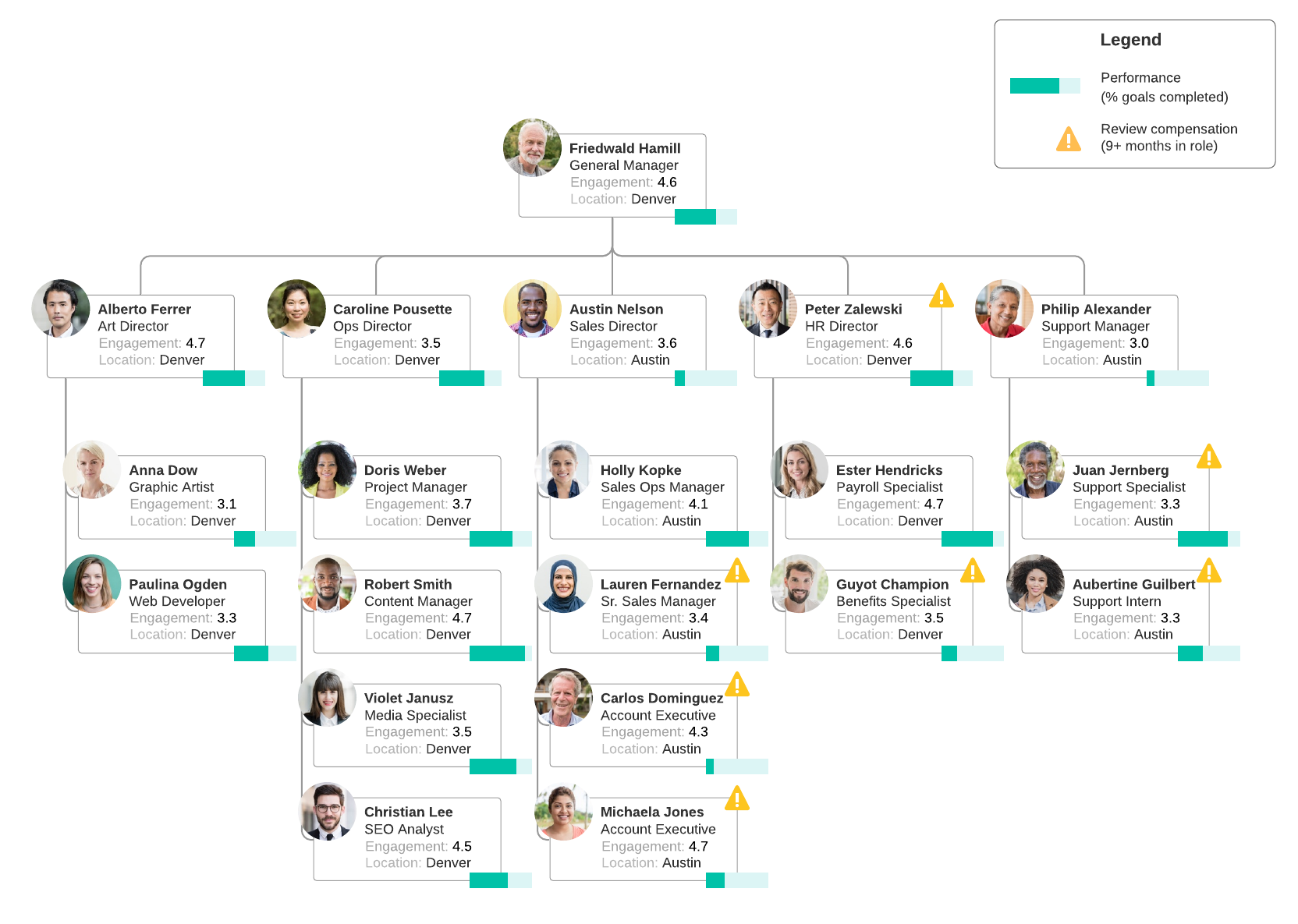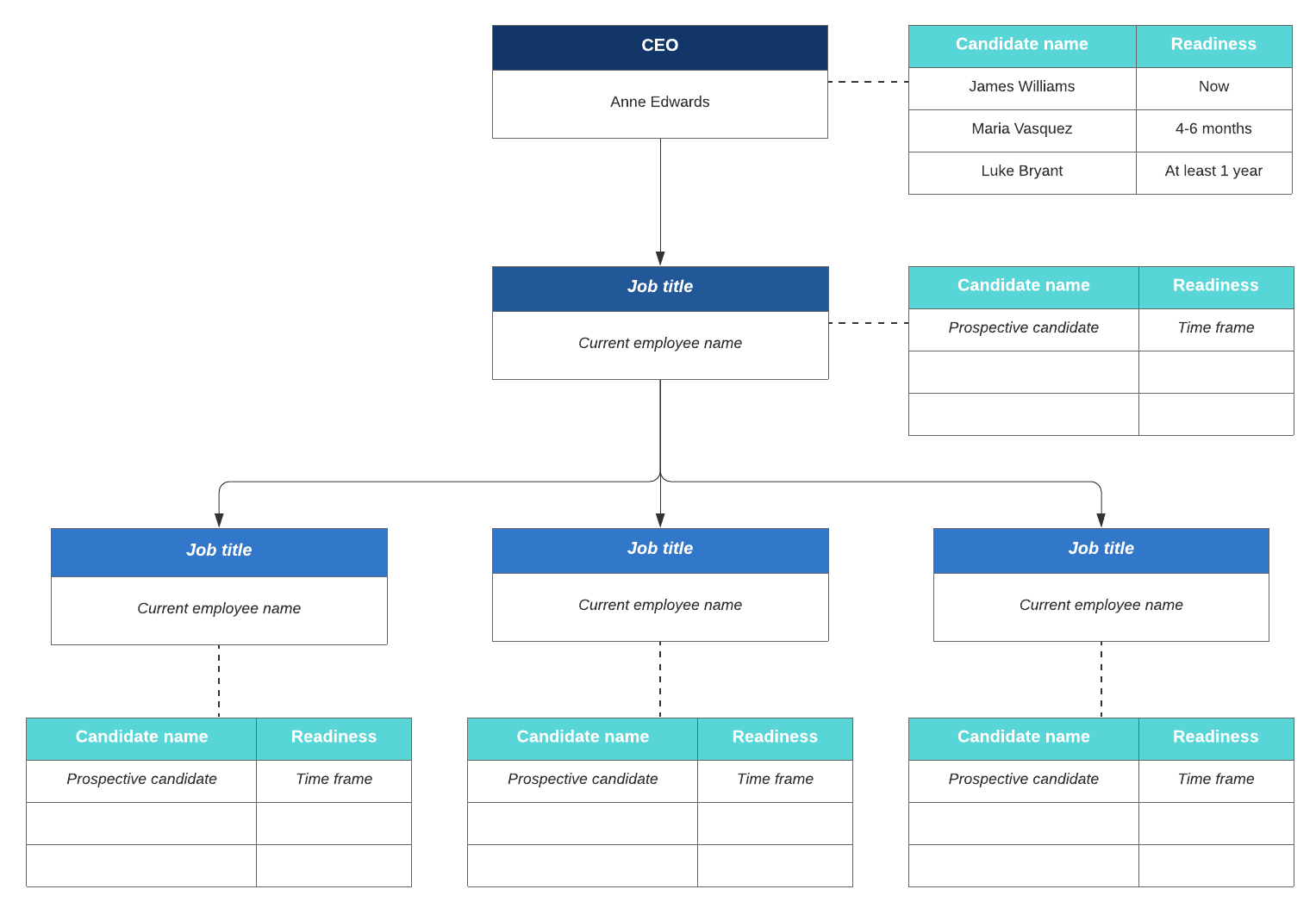
Succession planning best practices: 9 steps to prepare your org for change
Reading time: about 7 min
Topics:
No matter what size or stage your business is at, at some point in your company’s future, you will have to deal with employees leaving the company, moving to other departments, or taking new leadership roles within the same organization.
With a succession plan in place, you’ll be ready for these changes—and you can ensure that knowledgeable and capable people will move into those vacated or newly created positions.
Get prepared now with these succession planning strategies.
4 approaches to succession planning
Succession planning is all about getting the right people in the right roles at the right time. But this type of planning does not happen overnight and can be very difficult. According to a study from Deloitte, 86% of leaders know that succession planning is important, but only 14% believe they do it well.
Based on the findings from this study, Deloitte developed four broad approaches to succession planning—and though most companies use the first three options, Deloitte urges businesses to use a more “centered approach.”
-
Competitive: A serious, process-oriented approach that places potential successors through intense assessment and development. Many employees perceive this strategy as a cold, impersonal approach that ignores human factors such as anxiety and frustration.
-
Comfortable: An approach driven by intuition by decision-makers who know what the corporation needs. Decisions are made based on a candidate’s reputation and tenure. This strategy may make the decision-makers comfortable, but it is not objective.
-
Compliant: An approach where the company recognizes the need for a standardized, objective process. However, more pressing matters may compete for decision-makers’ time, and the processes that have been started may be set aside in favor of a more subjective approach.
-
Centered: A balanced approach that takes into consideration the impact succession planning has on the people involved while being supported by processes that keep the selection procedure objective.
With this ideal succession planning approach in mind, let’s turn to the basic steps of creating your succession plan.
9 succession planning steps
Remember—succession planning is more than simply naming a successor. It requires companies to think long-term about what goals they want to achieve, which people have the potential to align with that vision, and what training and experience successors will need.
Check out these succession planning best practices that you can use as you plan for your company’s future.
1. Get buy-in from executives and board members
Because succession is more than filling vacant spots, it is important to get executives and the board involved. These stakeholders can help determine how a successor should fit in with corporate values and culture. They are the decision-makers, the ones who generally have an understanding of the challenges and upcoming changes the business needs in order to grow and keep pace with or outrun the competition.

See our tips for gaining buy-in for organizational change from key stakeholders.
Learn more2. Align succession planning with corporate goals and strategies
It is up to the executive team and board members to determine where the company needs to be in the next four to six years.
An analysis of where you are today vs. where you want to go can help you determine the set of skills and the experience that a successor will need to successfully lead you in a new direction. Just as company goals should look to the future, your plan for choosing a successor should also look to the future.
3. Recruit superior employees
Your succession planning process should start by recruiting really great people. During the recruitment process, you can assess a candidate’s background, experience, and career plans to gauge how they could fit into your succession strategy long-term.
You don’t necessarily have to recruit for a specific high-level opening—instead, look for the qualities and experience that would help you recruit employees that can be developed and trained for future leadership roles.
4. Understand your employees’ goals and long-term plans
You may have big plans for an outstanding employee whose long-term goals don’t have anything to do with your company. Before tapping an exceptional employee for succession development, be sure you know where that employee plans to be in the next five to ten years. If those plans don’t include working at your company, move on.
Managers should meet regularly with direct reports to assess who is interested and capable of taking on more responsibilities within their teams. Then they should report that information to their superiors.
5. Visualize your organization to gain valuable insights
Create org charts to help you visualize what you already have available within your company. When you add employee data to org charts, it gives you valuable insight into the current skills, certifications, and experience of your employees. You should also include information about the employees’ goals. Some may not be interested in taking on leadership roles.
Looking at this information visually makes it easy to see where there are gaps that you need to fill, either from within or by looking outside the company. Keeping your org charts up to date will give you great insight as you plan for current and future needs.

6. Integrate career development and performance reviews into your succession planning process
It can be easier, cheaper, and more sensible to promote from within the company rather than looking for somebody new from the outside. Current employees already know your products, understand the company culture, are working to accomplish company goals, and have some degree of loyalty.
Be sure the company has programs in place to help employees build up their skills, learn new technologies, and be able to take on new leadership assignments and step into new roles.
Start planning with the template below—map out departmental and divisional hierarchies, keep a dynamic list of employee skills and experience, and visualize who is ready to move into new roles and take on more responsibilities.

7. Surround yourself with trusted advisors
Don’t try to make important decisions that will affect the company for years all on your own. Bring in senior staff, HR personnel, and other key team members to advise you. With the visuals you have created, your team can quickly understand your succession plan and provide feedback.
8. Communicate your plan
If you have somebody in mind to be a successor in a particular position, be sure you let that person know. According to research by Massachusetts Mutual Life Insurance Company, of the 64% of businesses that have a succession plan in place, only 25% of those selected to be successors have any idea that they are up for promotion.
This situation leads to a couple of potential problems:
- The person may not be interested in the position.
- The person doesn’t think there is room for advancement at your company and accepts a job with another company.
Letting an employee know that they are a major part of your succession plan opens the lines of communication so you can find out whether the candidate is interested in staying with the company and how they feel about that particular role.
Open communication lets the employee know that the work they do is valued, that the company wants to keep them around, and that you care about their career development.
9. Be transparent where you can
New hires and your current employees like to know that there is a career path for them with your company. Let them know how they can grow and what kind of training is available to learn new skills, and make mentoring programs available to them as appropriate. Employees who feel valued and who see their company putting in an effort to retain their talent have much higher morale and you will have less turnover.
As you begin developing your succession planning model, don’t expect everything to fall into place overnight. Be patient and understand that there may be a significant trial and error period as you find what works best for your company.
Be flexible. The strategies outlined in this article will be a great help, but feel free to add your own strategies or steps to the process or remove the ones that don’t seem right for you.

Learn how Lucidchart can help your organization visualize succession plans and prepare for the future.
Read nowAbout Lucidchart
Lucidchart, a cloud-based intelligent diagramming application, is a core component of Lucid Software's Visual Collaboration Suite. This intuitive, cloud-based solution empowers teams to collaborate in real-time to build flowcharts, mockups, UML diagrams, customer journey maps, and more. Lucidchart propels teams forward to build the future faster. Lucid is proud to serve top businesses around the world, including customers such as Google, GE, and NBC Universal, and 99% of the Fortune 500. Lucid partners with industry leaders, including Google, Atlassian, and Microsoft. Since its founding, Lucid has received numerous awards for its products, business, and workplace culture. For more information, visit lucidchart.com.
Related articles
How to get buy-in for changes to your organizational structure
If your company is preparing to scale, acquiring another business, or preparing to undergo another major change, an organizational redesign may be necessary. Learn how to get the necessary buy-in for your org changes from leadership and employees.
How to get buy-in from stakeholders
If the teams essential to a new project don’t see its value, they can often derail the adoption of a new process and render a project ineffective. Avoid this issue—learn how to get buy-in from stakeholders.
